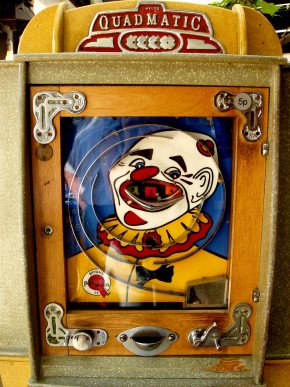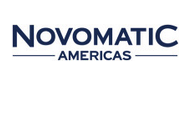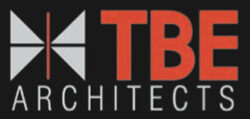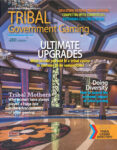
OLYMPUS DIGITAL CAMERA
Now that the dust has settled over the last round of NIGC Class II proposals, it is time to evaluate what has already happened, what is current, and what might happen next.
Over the last five years, the NIGC proposed several views, reviews, revisions and final thoughts about what it believed would finally provide the “bright line” between, on the one hand, Class II technologic aids and, on the other, Class III gaming permitted only pursuant to a compact or procedures. The commission’s efforts to provide that bright line never wavered, but the line never became clear. Finally, and to the resounding cheers of many who had followed the NIGC’s progress, Chairman Phil Hogen announced last summer that he would withdraw his proposed classification standards.
The actual withdrawal did not occur until October, at the same time that the commission published its final technical standards to govern Class II games, and its Minimum Internal Control Standards (MICS). Although the NIGC thereafter dismissed its Tribal Advisory Committees and then empaneled a new committee to advise on further MICS development, the NIGC has not spoken much about Class II in recent months.
Except when the chairman confirms that he still believes a bright line is needed. His statements mirror the text of the public notice withdrawing the proposed classification standards: “The withdrawal does not mean that the commission believes ‘one-touch’ bingo games are Class II,” says Hogen. “Going forward, the commission intends to address this and other classification issues through a combination of training, technical assistance, and enforcement actions.”
Evolution, Not Revolution
Both the rules to govern Class II technical standards and MICS, as promulgated, were greatly changed from their originally proposed form, thanks to the involvement of a Class II working group composed of tribal leaders, tribal regulators, tribal attorneys and industry experts whose suggested modifications to better reflect the technological reality of Class II gaming systems. At the end of a spirited process, the MICS and technical standards were not only transformed in structure, but acknowledged that regulation of a Class II gaming system was different from oversight of multiple Class III gaming devices. Although the working group felt that some of the NIGC’s late changes demonstrated residual confusion about Class II game play, the final rules could, at least, be understood in the context of issues presented by a Class II operation. Those rules are now in effect, and independent gaming laboratories have begun the task of testing Class II equipment to permit compliance certification.
While Chairman Hogen has not publicly embarked on any new classification initiatives, Class II is still generating regulatory interest. As some tribal observers have expected, states remain jealous of the ability of tribes to engage in Class II gaming outside state control. That ability built the impressive gaming operation in place at multiple sites maintained by the Seminole Tribe of Florida, and is also the principal leverage for the Seminole Tribe’s migration to Class III operations. So long as Class II games remain attractive to customers, even compacted tribes can consider the option of placing Class II systems on the floor independent of state jurisdiction-and generate a revenue stream independent of state demands for revenue sharing. It is not surprising that exercise of that tribal right has caused some consternation.
California Dreamin’
In California, economic reality has reduced the value of expanded Class III gaming to below the new cost of the “fair share” gaming compacts. After months of operation under the new compacts, some tribes have found the incremental revenues of the new games to be dwarfed by the greatly enhanced revenue share obligation, making the state the primary beneficiary of expanded Class III operations. As a result, some tribes are exploring changing out some of their floor space to Class II games whose revenue stream need not carry the additional burden of state payments. The state is not amused.
The California Gambling Control Commission (CGCC) has expressed interest in examining Class II games that some tribes have chosen to place on their floors as an alternative to the Class III expansion. The CGCC asserts that it is entitled, under the compact, to determine whether “Class II games” are no more than Class III games with a thin veneer of bingo, as to which the state may claim payments. But IGRA accords tribes exclusive regulatory authority over Class II games, with oversight by the NIGC. The statute permits state involvement only in Class III gaming, and only pursuant to the terms of a compact. Tribes reject CGCC involvement in regulation of Class II gaming. The new “bright line” discussion continues to be the proper distinction, under IGRA, between Class II technological aids, subject only to tribal regulation, and Class III devices subject to regulation through a tribal/state compact. But now the growing question is: who decides where that line falls?
The Sycuan Tribe, in southern California, has been operating Class II games alongside its compacted Class III devices. The Sycuan Gaming Commission has dealt with inquiries from both the NIGC and the CGCC with respect to the status of its games.
Not satisfied with a Class II checklist apparently utilized by those agencies, the Sycuan Gaming Commission has begun to structure a regulatory process to provide a more meaningful discussion of the distinction. It intends to create a regulatory product permitting classification judgments premised on the foundation of broad and deep understanding of what constitutes Class II gaming under the IGRA. As such, the Sycuan Tribal Gaming Commission is planning for an information-gathering proceeding of a kind never before undertaken in Indian Country.
In early May, the Tribal Gaming Commission is expected to convene a hearing to take testimony, both oral and written, on the subject of Class II gaming under the IGRA, the development of technologic aids, the development of regulation and classification of those aids, and the different approaches to resolving the conflicts about which features are critical to game classification. Witnesses will include those with years of experience in traditional and evolving bingo halls, those who participated in the drafting of the IGRA legislation, and others who struggled with the regulation of the games as the technology developed. Collectively, they must address the possibilities for implementing the three IGRA criteria for bingo in ways not contemplated when the peak of technological choice was choosing the color of a dauber.
Congress stated its intent that tribes have the fullest possible use of new and evolving technology. If they are to benefit, the tribes must constantly evaluate how that evolving technology might be deployed while preserving the distinction Congress created between Class II and Class III games. But doing so must not harm legitimate Class II gaming, the one class of commercially viable gaming that Congress protected as the tribe’s exclusive preserve. Tribes have a profound interest in retaining this aspect of their governmentally operated economic enterprise.
Tribal regulators have deep expertise in regulating within that preserve. The Sycuan Gaming Commission is poised to begin the next effort to provide meaningful game classification, as guidance for its own facility, for state and federal regulators. Other tribes, seeking to keep and clarify control over their own operations, might benefit from the effort. And all of us will learn from the information assembled.


















